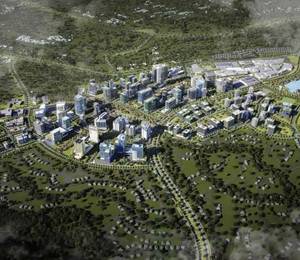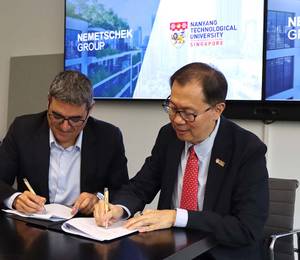Bentley Systems recently presented its new digital cities initiatives, applying digital twins technology for more efficient city and regional operations as well as for more connected and resilient infrastructure. Digital twins converge assets’ 4D-surveyed and engineering representations to enable new collaborative digital workflows to serving planners and engineers in public works, utilities, property management and development, and city stakeholders.
Digital twin cloud services provide an intuitive and immersive 4D environment, converging digital context and digital components with digital chronology for ‘evergreen’ infrastructure digital twins over asset lifecycles. For infrastructure professionals, BIM and GIS are effectively advanced through 4D digital twins.
“Bentley Systems’ major technical thrust is the advancement of digital twins across infrastructure domains. This finally opens up for owners their previously ‘dark’ engineering technologies and data (ET), for federation with traditional information technology (IT) and newly connected operating technologies (OT),” said Greg Bentley, CEO of Bentley Systems.
“Correspondingly, because the opportunities for benefits are so compelling, our major organisational initiative is our new digital cities product advancement group. Our digital cities group’s charter is both to ramp infrastructure engineering digital twins to full city scale, and at the same time to help with going digital through entry points for any engineering department in any municipality.”
“At Bentley Systems we have long and rich histories in respectively geospatial technology (GIS), and in BIM, for municipal infrastructure applications spanning capex and opex,” said Robert Mankowski, Bentley’s vice president for digital cities. “With our new cloud-based iTwin Services bringing this all together, city and campus digital twins now offer an immediate opportunity to help cities and regions solve a wide range of challenges and problems, enhancing their infrastructure performance and their constituents’ quality of life.”
Infrastructure digital twins
City-scale digital twins begin and are updated through 4D surveying and reality modelling by ContextCapture and Orbit GT to derive as-operated 3D models from photogrammetry (including from UAVs) and/or point clouds.
Reality modelling provides engineering-precise, real-world context to support planning, design, construction, and operations. Users of Bentley’s open applications (OpenBuildings, OpenSite, OpenRoads, OpenRail, OpenUtilities) can leverage this digital context to model new and improved buildings, roads, transit systems, tunnels, bridges, utilities, and more.
4D digital twins become a common and federating index for previously siloed information, without requiring source systems to change their existing environments or data formats. The foundation context for any digital twin includes reality meshes, terrain models, imagery, and GIS sources. Engineering models (from any BIM software) of buildings, streets, transit systems, utilities, and other city infrastructure, both surface and subsurface, are semantically aligned and geo-referenced to enhance the richness and relevance of digital twins over time.
Public works departments, property developers, utilities, transportation agencies, and others now have access to a full and current contextual view of the built environment. Engineering and architectural firms will be able to develop new services that contemplate updating and managing digital assets over their lifecycles. And, cities will benefit from living and current digital twins of their infrastructure and surrounding environment.
Now, cities can combine their surface and subsurface surveys and engineering data into cohesive 4D digital twins to ensure over time their asset performance, resiliency, and sustainability. Using Bentley’s open simulation applications during asset lifecycles, for example, as-constructed buildings can be evaluated for seismic resilience (STAAD), the evacuation of vehicles and people in stations, stadiums, and other public places can be assessed and optimised (Legion and Cube), the impact of flooding events like hurricanes can be determined (OpenFlows Flood), and the suitability of subsurface conditions for urban projects can be ensured (Plaxis, SoilVision).
OpenGround: geotechnical digital twins
Bentley’s geotechnical engineering and analysis applications empower subsurface digital twins, critical for assessing and managing risks in infrastructure projects and assets. Subsurface digital twins entail modelling of the underground environment, including the geology, hydrology, chemistry, and engineering properties, made possible by Bentley’s geotechnical offerings (Plaxis, SoilVision, Keynetix and gINT).
To further enable subsurface digital twins, Bentley has introduced the OpenGround, a new cloud service (available end of 2019) to store, manage, report, and share data about natural ground conditions.













